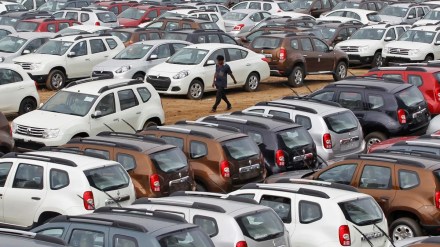The upcoming emission norms have created a rift in India’s automotive industry body. On the one hand, Maruti Suzuki is believed to be lobbying with the government for a new and separate set of norms for small cars. The rest of the pack, on the other hand, wants only one norm for the industry.
The government is aiming to bring down vehicular emissions through the third edition of the Corporate Average Fuel Efficiency (CAFÉ) norms, to be enforced from April 1, 2027. These norms are designed to improve vehicle mileage and curb carbon emission.
As per the submission made with the ministry of heavy industries (MHI) in December, 2024 by the Society of Indian Automobile Manufacturers (SIAM), all automakers had agreed to a single target of 91.7 gm CO2/km for passenger vehicles under the CAFÉ 3 norms.
This is significantly lower than the norms under CAFÉ 2, which mandate that the average CO2 emissions for a manufacturer’s fleet of vehicles be below 113 grams per kilometre.
However, sources claim that “in mid-June, MHI called for a meeting where it was discussed whether the industry should have two separate CAFÉ 3 norms – one for cars weighing under 1,000 kg and another for bigger cars bigger than that”.
They added that “if Maruti’s proposal is accepted, then the norms will become less stringent for the small car maker and more stringent for bigger cars. This would mean more investment and cost for others. It is like subsidising small cars for the benefit of one company,” said the source.
In a written response, a company spokesperson for Maruti Suzuki said:
“It is blatantly incorrect to say that small car protection will change our EV approach. The legacy CAFÉ regulation follows a differentiated approach based on weight, which actually penalises light-weight cars and encourages higher weight cars.
For instance, a small petrol car with about 97 g/km (lower absolute) CO2 emission does not meet the target as per CAFÉ but a diesel SUV emitting about 128 g/km (higher absolute) meets the CAFÉ target. Almost every major country of the world – US, China, Japan, Korea, Europe – has some form of small car protection in their CAFÉ regulations to correct this anomaly.
We will be the highest volume EV manufacturer in India within a year of launch, for which we will have many customer confidence measures like fast chargers, home chargers, on-road assistance, a dedicated mobile app, etc.”
Maruti Suzuki has the biggest portfolio of small cars, with around 10 models weighing less than 1000 kg. Models such as Wagon R, Swift, Dzire, Eeco, Fronx, are a part of this portfolio, and make up 65% of the domestic volumes for the company.
While Renault Kiger and Kwid, Tata Tiago, Punch and Altroz, Toyota Glanza, Hyundai Exter and i10 Nios, Citroen C3, Nissan Magnite also weigh less than 1000 kg, no other manufacturer is learnt to have spoken in favour of having two separate emission norms.
“There was no categorisation on the basis of weight of the vehicle as per the submission made to the government. Then suddenly there was a proposal for having different norms for small cars. This kind of proposal will largely favour only one company,” said an executive of a Mumbai-based company.
Meanwhile, Union Minister for roads and transport, Nitin Gadkari is understood to have called a meeting of SIAM members on July 2. The discussions are expected to focus on end of life vehicles, CAFÉ 3 norms, BS7 and categorisation of vehicles.
A mail sent to SIAM remained unanswered at the time of going to press.
